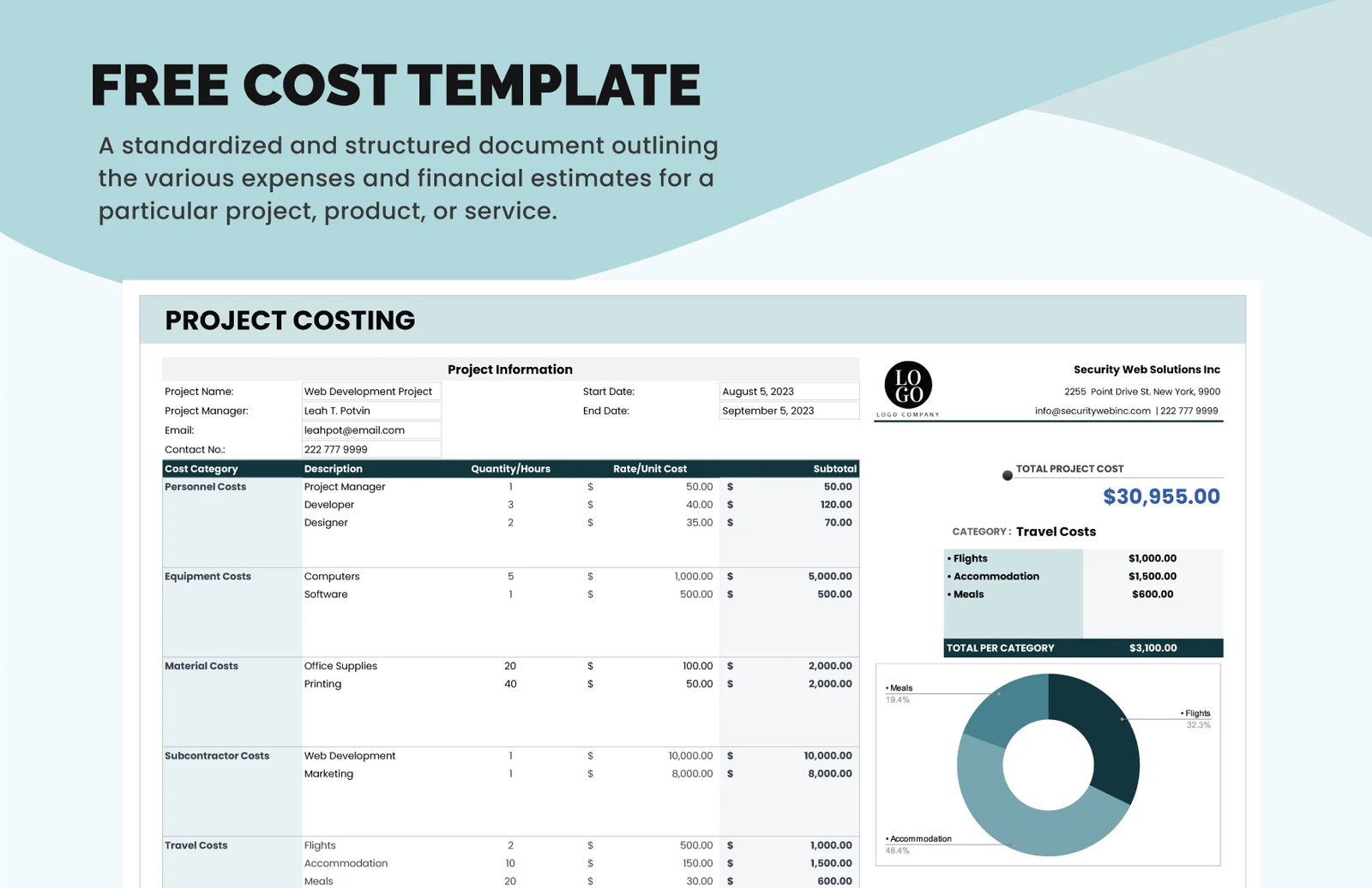Introduction
Effective project management is crucial for the success of any organization. One of the key components of managing a project efficiently is cost management. Accurately estimating, tracking, and controlling project costs can make the difference between a project that stays within budget and one that exceeds it. To help with this, organizations often use a Project Costing Plan Template Document. In this article, we will explore what this document is, its importance, and how to create one.
You can download Complete Set of Project Management Documentation from Project Plan Excel.
What is a Project Costing Plan Template Document?
A Project Costing Plan Template Document is a comprehensive blueprint that outlines all the financial aspects of a project. It serves as a reference point for project managers and stakeholders, detailing the estimated costs, budget allocations, and cost control measures throughout the project’s lifecycle. This document not only aids in planning but also facilitates effective decision-making, risk assessment, and resource allocation.
Key Components of a Project Costing Plan Template Document
- Project Overview: Begin by providing a brief overview of the project, including its objectives, scope, and timelines. This sets the context for the cost estimates and helps stakeholders understand the project’s financial requirements.
- Budget Allocation: Define the total budget for the project and allocate specific amounts to various categories such as labor, materials, equipment, overhead, and contingency. Ensure that the budget aligns with the project’s goals and requirements.
- Cost Estimations: Detail the estimated costs associated with each project management approach template. Include both direct costs (e.g., labor, materials) and indirect costs (e.g., project management, administrative expenses). Use historical data, expert opinions, and industry benchmarks to make accurate estimations.
- Resource Planning: Identify the human and material resources required for the project. This section should outline the roles and responsibilities of team members and their associated costs. It should also include any third-party services or contractors.
- Risk Assessment: Assess potential risks that could impact the project’s budget. Include a risk mitigation strategy that outlines how these risks will be managed and their potential financial implications.
- Cost Control Measures: Define the mechanisms and tools that will be used to control project costs. This may include regular budget reviews, expense tracking, and change management procedures.
- Contingency Plan: Outline a contingency plan in case the project encounters unforeseen costs or delays. Having a plan in place ensures that the project costing plan can adapt to unexpected challenges without compromising its financial viability.
- Reporting and Monitoring: Describe how project costs will be monitored and reported to stakeholders. Include key performance indicators (KPIs) and reporting intervals to ensure transparency and accountability.
Check out Project Work Plan Template Excel as a related template.
Benefits of Using a Project Costing Plan Template Document
- Improved Budget Accuracy: By meticulously estimating and allocating costs, organizations can minimize budget overruns and make informed decisions regarding resource allocation.
- Enhanced Decision-Making: A well-structured costing plan provides project managers and stakeholders with the data needed to make timely and effective decisions, such as whether to proceed with a project or implement cost-saving measures.
- Risk Mitigation: Identifying and addressing potential risks in advance helps organizations avoid costly surprises and allows for proactive risk management.
- Resource Optimization: Efficient resource planning ensures that human and material resources are used effectively, reducing wastage and unnecessary expenses.
- Transparency: A comprehensive costing plan promotes transparency among team members and stakeholders, fostering trust and accountability.
Related Template: Staff Roster Template Excel
Conclusion
In the world of product competitive analysis template, a Project Costing Plan Template Document is an invaluable tool for ensuring that projects stay on track financially. By detailing budget allocations, cost estimations, risk assessments, and contingency plans, organizations can minimize financial uncertainties and enhance their project management capabilities. Implementing such a document as a standard practice can lead to more successful projects, satisfied stakeholders, and improved organizational efficiency.
You can get complete set of project management tools from Project Times.


